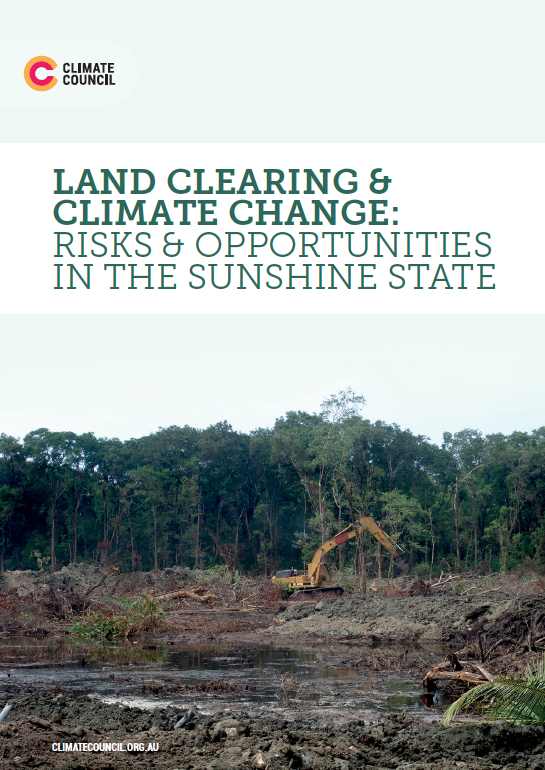Queensland has become the national hotspot for land clearing, accounting for up to 65% of the total loss of native forests in Australia over the last four decades.
The Climate Council’s latest report “Climate Change and Land Clearing: Risks and Opportunities in the Sunshine State’’, shows that more than one million hectares of woody vegetation, an area more than seven times larger than the size of Queensland’s capital of Brisbane, has been cleared between 2012-13 and 2015-16.
DOWNLOAD THE REPORT
KEY FINDINGS INCLUDE:
● Queensland has become Australia’s hotspot for land clearing, accounting for between 50-65% of the total loss of native forests in Australia over the last four decades.
● Over one million hectares of woody vegetation, of which 41% was remnant vegetation, was cleared in Queensland between 2012-13 and 2015-16.
● In 2015 alone the land use sector in Queensland was responsible for 19 million tonnes of greenhouse gas pollution, roughly 20% of the pollution from Queensland’s entire energy sector including electricity, stationary energy and transport.
● The 2015-16 clearing rate in Queensland was the highest since 2003-04 (490,000 hectares/year).
● In 2015-16 395,000 hectares of woody vegetation were cleared, representing a 33% increase over the previous year. This is equivalent to roughly half of the forest cleared in the Brazilian Amazon rainforest in 2016.
● If current proposed amendments to the Queensland Vegetation Management Act (1999) pass, it could lead to a tripling of the amount of vegetation protected.
● Land clearing policy has had a significant impact on the rates of land clearing. When strong laws have been in place, land clearing has decreased. On the flip side, when laws have been relaxed, there has been a dramatic increase in land clearing.
